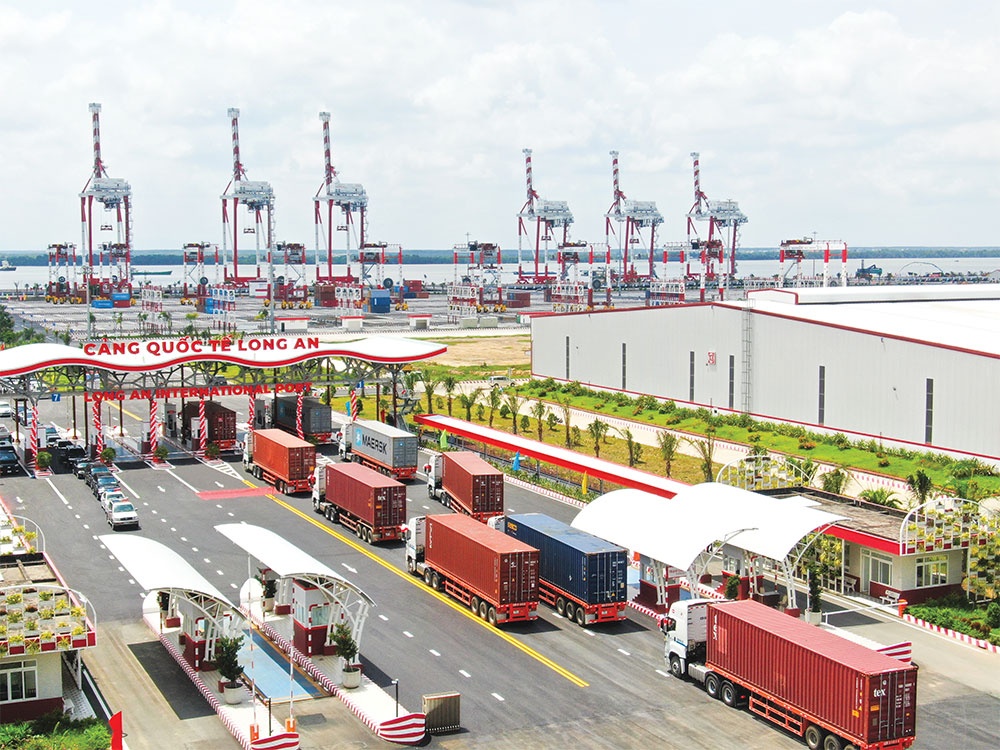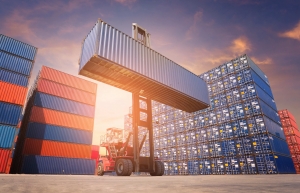Promising conditions yet within reach for local exporters
In the past four months, Vietnam’s export turnover of goods has increased on-month, confirming the expected improvement for 2023 through the rising comeback of the world’s purchasing power and consumer confidence.
 |
| Promising conditions yet within reach for local exporters |
The General Statistics Office reported that total export turnover in August was estimated at $32.37 billion, up 7.7 per cent on-month, while total import turnover was estimated at $28.55 billion, an increase of 5.7 per cent on-month. This on-month growth is increasingly higher than that in previous months.
Specifically, export values in July, June, and May reported a rise of 3.5, 4.5, and 4.3 per cent on-month, while import values reported up 4.4, 2.6, and 6.4 per cent, despite the deep decrease in both export and import turnover during the first four months.
Notably, the soar in total import turnover comes from materials for production, so exports are expected to get stronger in the coming months.
According to the Ministry of Industry and Trade (MoIT), the US economy, which is Vietnam’s one of most important export markets with a total export turnover of $62.3 billion, has reported higher-than-expected growth recently, and commodity inventories continue to decrease, which is a favourable for Vietnam’s exports.
“Moreover, developed countries still maintain the strategies of diversifying supply resources, supply chains, and investments, which will help Vietnam become a major production and export hub in the global value chain,” said Nguyen Thao Hien, deputy director general of the MoIT’s European-American Market Department.
In August, the main export items reporting some growth include computers, electronic products, and components increasing by 8.7 per cent, textiles and garments by 1 per cent, footwear by 3.3 per cent, and the agricultural and aquatic product group by 6.5 per cent on-month.
Tran Anh Khoa, director of shrimp exporter Anh Khoa Co., Ltd. in the southernmost province of Ca Mau, confirmed that exports have shown clear signs of recovery due to the increasing demand for seafood for the mid-autumn season and year-end festivals. “We have worked with some new customers from a variety of countries in Asia. Compared to the same period last year, the number of orders is getting higher, and we expect positive results,” Khoa said.
Vuong Duc Anh, chief of office at Vietnam Textile and Garment Group, said that although there is weak demand, it could increase for year-end festival seasons at about 10 per cent on-month. “The market in the last months of the year cannot be worse than the previous period because the worst status of the textile industry has passed already. More than half of our customers see some positive signals of the market at the end of the year,” Anh said.
Nguyen Xuan Son, director of Huong Que Import-Export Co., Ltd., said that exports have slowed down in all markets since the end of the second quarter, and purchasing power in the export market decreased by 30 per cent.
“Prolonged high inflation in Germany – the main export market of the company – has caused purchasing power to decline sharply by 40-50 per cent,” Son said. “Despite forecasting a difficult situation, the company still expects to sign some orders next months for production in 2024.”
However, experts said that there were still plenty of challenges for exports due to global economic uncertainties. Big economies - key export partners of Vietnam such as the United States and the EU - are tightening expenses on common and luxury products.
International organisations forecast that Vietnam’s economy will face many difficulties caused by impacts from both inside and outside. Vietnam’s economy is open, so it is likely to be affected by the decline in global economic growth, market fluctuations and policy adjustments of major economies. Therefore, exports will struggle with the mutual challenges of partner markets.
Hien from the MoIT said EU countries and the US had taken many measures to curb inflation, and boost consumption, and export growth. These policies have initially taken effect, and inflation in major markets such as the US, EU, and UK had tended to decrease.
“With many new advantages, exports can recover growth in the fourth quarter. Besides that, the UK’s accession to the Comprehensive and Progressive Agreement for Trans-Pacific Partnership will open new opportunities for Vietnamese exports,” Hien said.
Tran Minh Thang, head of the Vietnam Trade Office in the US, said that there were signs of recovery in the US market, which was expected to grow higher.
“A large amount of inventory has already been released, employment is improved, and purchasing power in the US will get higher, especially in the shopping season at the end of the year. There should be a slight increase in exports to this market in the fourth quarter,” Thang said.
Do Viet Ha from the Vietnam Trade Office in Germany said, “Vietnam has many products that Germans have high demand for, such as wooden furniture, garments, textiles, footwear, coffee, tropical fruits and vegetables. In addition, Vietnam is one of the few countries in Asia that has a trade deal with the EU, so goods from Vietnam can enter much more easily than from other countries.”
She also revealed that Germany is gradually reducing its dependence on Chinese goods.
 | Exporters yearning for switch to global payment terms to protect business Many local exporters, who want to switch their export methods to shun risks caused in the international freight market, aim to take control over shipping lines and freight insurance previously under the responsibility of overseas buyers – but the route ahead is not without hurdles. |
What the stars mean:
★ Poor ★ ★ Promising ★★★ Good ★★★★ Very good ★★★★★ Exceptional
Related Contents
Latest News
More News
- First members of Danang International Finance Centre revealed (December 22, 2025 | 17:39)
- Human-centred governance seen as key to AI development (December 19, 2025 | 18:19)
- Top 10 notable events of Vietnam’s industry and trade sector in 2025 (December 19, 2025 | 14:00)
- Tungsten surges to 12-year high as world enters a new 'black gold' race (December 18, 2025 | 17:27)
- Vietnam’s coffee exports set new record despite price pressures (December 18, 2025 | 17:13)
- Garment and textile sector seeks new growth after volatile year (December 18, 2025 | 17:01)
- VinSpeed and Siemens strengthen cooperation for high-speed rail development (December 18, 2025 | 16:53)
- High-tech adoption for TH true MILK (December 18, 2025 | 13:39)
- Takeda supports health resilience amid climate change challenges (December 18, 2025 | 12:39)
- Mondelez Kinh Do - a chapter of purpose-led leadership in Vietnam (December 18, 2025 | 09:44)

 Tag:
Tag:






















 Mobile Version
Mobile Version